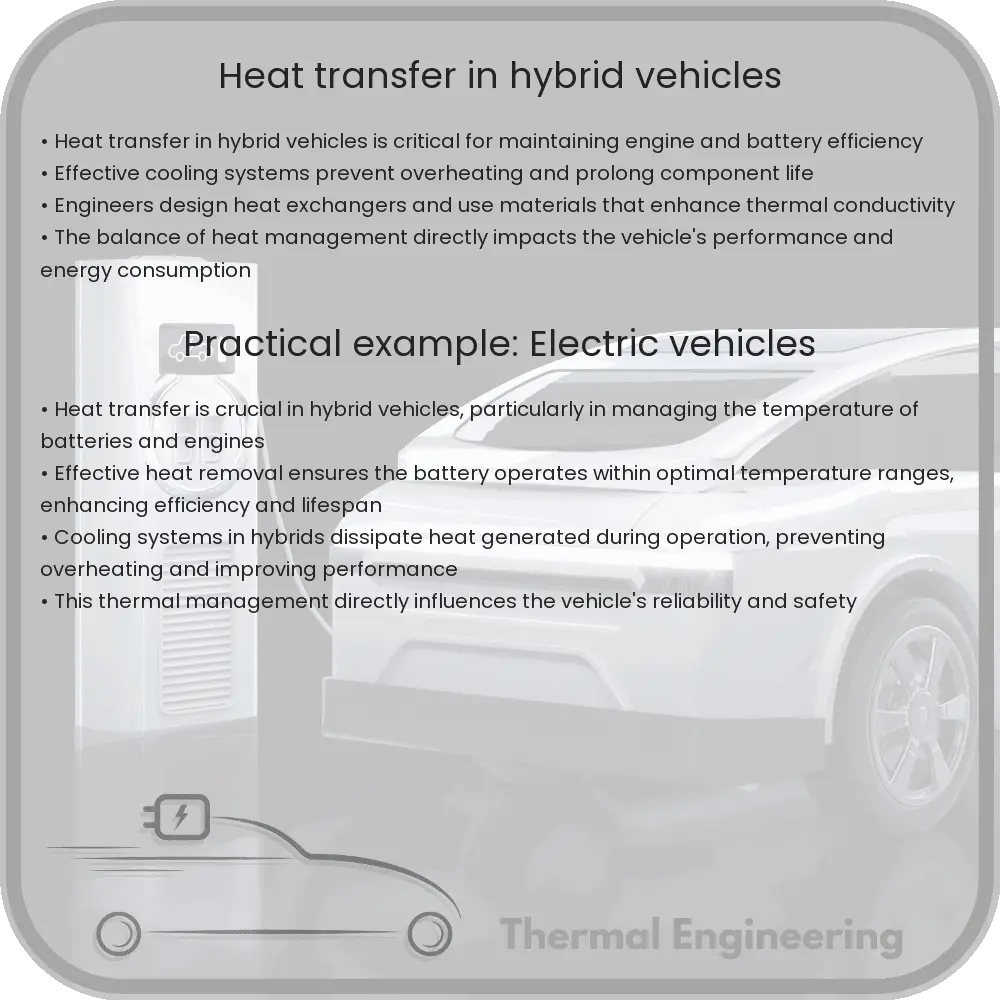Learn about heat transfer challenges and solutions in hybrid vehicles, focusing on maintaining efficiency and component longevity.

Understanding Heat Transfer in Hybrid Vehicles
Hybrid vehicles, which combine an internal combustion engine with one or more electric motors, face unique challenges when it comes to managing heat. Effective heat transfer is crucial for maintaining the performance, efficiency, and longevity of both the engine and the battery system. In this article, we’ll explore the fundamentals of heat transfer in hybrid vehicles and the innovative solutions engineers apply to control temperature.
Key Concepts of Heat Transfer
Heat transfer in hybrid vehicles involves three basic modes: conduction, convection, and radiation:
- Conduction is the transfer of heat through materials, such as from the engine block to its surroundings.
- Convection involves the movement of heat by the flow of fluids, which in vehicles is typically air or coolant fluids.
- Radiation refers to the transfer of energy through electromagnetic waves, like heat radiating off the car’s surface into the environment.
Challenges in Hybrid Vehicles
Hybrid vehicles need to manage the heat produced by both the engine and electrical components. The main challenges include:
- Higher operating temperatures in compact spaces, increasing the demands on heat dissipation.
- Varying heat loads as the vehicle shifts between electric motor and internal combustion engine operation.
- Battery efficiency and lifespan reduction when exposed to high temperatures.
Engineering Solutions for Efficient Heat Management
To address these challenges, hybrid vehicle designs incorporate several advanced heat transfer technologies:
- Advanced Cooling Systems: These systems are more sophisticated than those in conventional vehicles, often utilizing dual cooling circuits to separately manage the heat from the engine and the batteries.
- Heat Exchangers: Hybrid vehicles use specialized heat exchangers to dissipate heat efficiently from the engine and electrical systems. These exchangers must be highly efficient due to the confined space and the need to minimize weight.
- Thermal Barriers: These materials are used to insulate components, particularly the battery, from excessive engine heat, thereby stabilizing the battery temperature.
- Thermal Interface Materials (TIMs): TIMs improve the heat conduction between different components, aiding in the rapid transfer and dissipation of heat.
Impact of Heat Transfer Technology on Hybrid Vehicles
Effective heat transfer technologies not only prolong the life of the hybrid vehicle’s components but also enhance overall vehicular performance. They contribute to:
- Improving the efficiency of the internal combustion engine and electric motors by keeping them at optimal operating temperatures.
- Enhancing battery performance and lifespan by preventing overheating, which is critical in maintaining battery health and efficiency.
- Reducing energy consumption by optimizing the thermal management system, thus supporting the vehicle’s environmental friendliness.
As technology advances, the integration of smart thermal management systems using sensors and adaptive controls is expected to further improve the efficiency and performance of hybrid vehicles. These systems dynamically adjust to temperature changes and operational modes, ensuring optimal heat management across different driving conditions.
In conclusion, heat transfer is a critical aspect of hybrid vehicle design, requiring sophisticated engineering solutions to handle the complex interplay of thermal energy within these advanced vehicles. As hybrids become more prevalent, the innovation in thermal management is likely to continue its rapid pace, advancing both the performance and environmental impact of these vehicles.